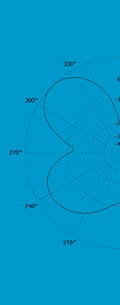 All materials on this site © PAR Electronics, Inc.
All materials on this site © PAR Electronics, Inc.
PAR Electronics, Inc.
P.O Box 645
Glenville, NC 28736
Voice: 828-743-1338
Fax: 866-304-8479
Email us if you have questions or comments about this site.
Site by
Pinnacle Web Design
Vintage Radio Restoration - Hallicrafters SR-400
The SR-400 was part of a series of transceivers beginning with the SR-150 in 1963. The 150 was a five band, 19 tube rig featuring RIT, calibrator and CW break-in. The matching PS-150 power supply also contained a speaker. The SR-160 was an 80/40/20M version of the 150. The SR-400 (Cyclone) came along in 1965. This was Hallicrafters' answer to the Collins KWM-2, and boy did they answer. The Cyclone is virtually identical in size to the Collins and features all-aluminum construction. But unlike the Collins, the 400 was capable of excellent CW operation. To that end, the 400 has 1KHz calibration points, RIT, a CW filter, notch filter and effective noise blanker. A pair of 6HF5 finals produce 200W of CW and SSB. The 400A (Cyclone III) was the last in the 400 line and produced 275W PEP and 175W CW. The HA-60 cooling fan, an option on the 400, was standard on the 400A rigs. Following the 400 series was the SR-150 in 1965, the SR540, SR-750 (a 750W Cyclone) and finally, the SR-2000 Hurricane capable of 1KW PEP output and 500W CW.
One cannot discuss the 400 and later series of the SR line without a brief mention of the HA-20 remote VFO. It not only mimics the internal VFO but also allows DUAL RX! Mind you, this is the mid-1960s. That VFO today is very rare and, understandably, is a collector's item itself.
My last SR-400 (and the one photographed here) was advertised on a swap group along with its PS-500 power supply as not only being a parts rig, but the seller was asking what parts someone might need. Photos showed a clean but dirty front panel. I could not let this radio be parted out.
Upon arrival, I checked out the PS and found the electrolytics to be in fine shape and overall the supply was working well. Not so for the rig itself. No sound, only panel lights. When removed from the cabinet, it was obvious why the rig was dead. The can electrolytic was disconnected! The sections were all very leaky. As the photos illustrate, the can was opened and new electrolytics installed. After resealing the can, a label was added to the top to indicate when it was restuffed. Only slight touch-up in alignment was required. The cabinets were pretty rough so they were taken to my powder coater who bead-blasted them and put on a very close color matching powder coat. Some hardware, like the chewed up cabinet lid screws were replaced with stainless steel equivalents. The chassis was thoroughly cleaned and polished. DeOxit was applied with Q-tips on all switches and controls. All knobs were removed, cleaned and a drop of lightweight oil applied to each set screw. While the knobs were off, I applied 2 coats of Rejex polymer to the front panel.
The finished rig is absolutely stunning in appearance and operation. It now occupies a proud position in the vintage line up at WA4JQS.
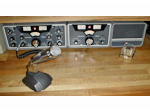 |
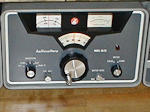 |
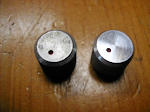 |
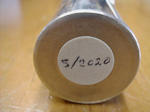 |
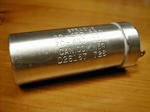 |
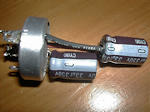 |
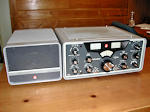 |
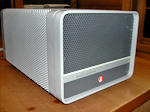 |
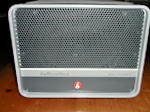 |
 |
 |
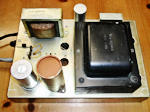 |
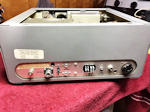 |
 |
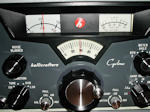 |
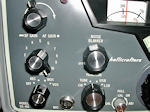 |
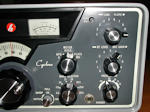 |
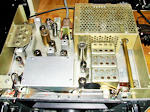 |
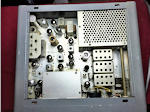 |
